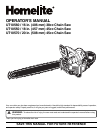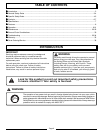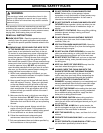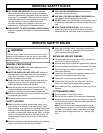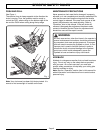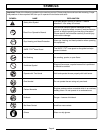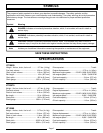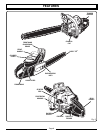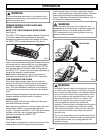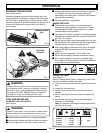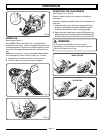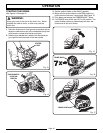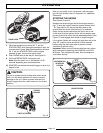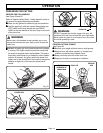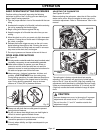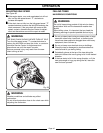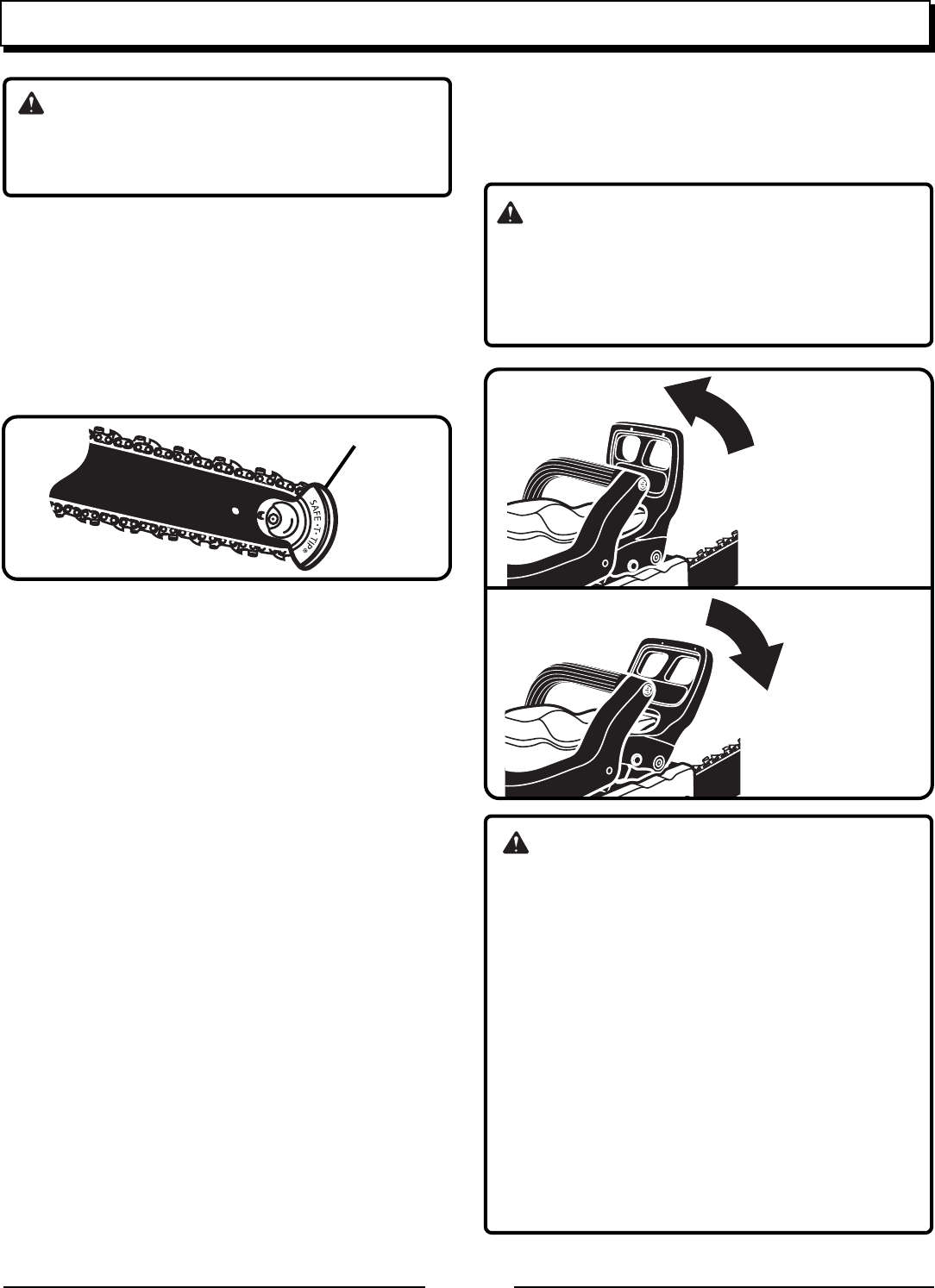
Page 9
Fig. 3
RUN POSITION
BRAKE
POSITION
Fig. 5
Fig. 4
SAFE-T-TIP
®
WARNING:
The warnings and instructions in this section of the
operator's manual are for your safety and to prevent
serious personal injury.
UNDERSTANDING YOUR CHAIN SAW
SAFETY DEVICES
SAFE-T-TIP
®
ANTI-KICKBACK NOSE GUARD
See Figure 3.
The SAFE-T-TIP
®
prevents kickback because it covers the
tip of the bar where rotational kickback is generated.
Inexperienced persons should never attempt to cut when
the SAFE-T-TIP
®
has been removed from the bar tip.
Users, such as professional loggers who need to draw the
tip through the cut, make boring cuts, or cut logs bigger
than the bar length, should reinstall the SAFE-T-TIP
®
as
soon as those cuts are complete. When cutting without
the SAFE-T-TIP
®
, the user must use proper techniques as
shown in the manual to avoid kickback.
Note: Refer to “Maintenance” later in this manual for
instructions on reinstalling the SAFE-T-TIP nose guard.
LOW KICKBACK SAW CHAIN
The rakers (depth gauges) ahead of each cutter can
minimize the force of a kickback reaction by preventing
the cutters from digging in too deeply at the kickback
zone. Only use replacement chain that is equivalent to
the original chain or has been certified as a low kickback
chain.
As saw chains are sharpened, they lose some of the low
kickback qualities and extra caution is required.
GUIDE BARS
Generally, guide bars with small radius tips have some-
what lower kickback potentials.
When making a replacement, be sure to order one of the
Homelite bars listed for your saw in this operator's
manual. The proper size SAFE-T-TIP
®
nose guard comes
installed on the bar. Use only guide bars that have a
provision for mounting the SAFE-T-TIP
®
.
CHAIN BRAKE
See Figures 4 and 5.
Chain brakes are designed to quickly stop the chain from
rotating. When the chain brake lever/hand guard is
WARNING:
KICKBACK
occurs when the moving chain contacts
an object at the upper portion of the tip of the guide
bar or when the wood closes in and pinches the saw
chain in the cut. Contact at the upper portion of the
tip of the guide bar can cause the chain to dig into
the object and stop the chain for an instant. The
result is a lightning fast, reverse reaction which
kicks the guide bar up and back toward the
operator. If the saw chain is pinched along the top of
the guide bar, the guide bar can be driven rapidly
back toward the operator. Either of these reactions
can cause loss of saw control which can result in
serious injury.
Do not rely exclusively upon the safety devices built
into your saw. As a chain saw user, you should take
several steps to keep your cutting jobs free from
accident or injury.
OPERATION
pushed toward the bar, the chain should stop immedi-
ately. A chain brake does not prevent kickback. The chain
brake should be cleaned and tested before each use.
Refer to “Operation- Operating the Chain Brake” later in
this manual for additional information.
WARNING:
Even with daily cleaning of the mechanism, the
dependability of a chain brake to perform under field
conditions cannot be certified. Keep the SAFE-T-
TIP
®
nose guard on your saw's guide bar and use
proper cutting techniques.



